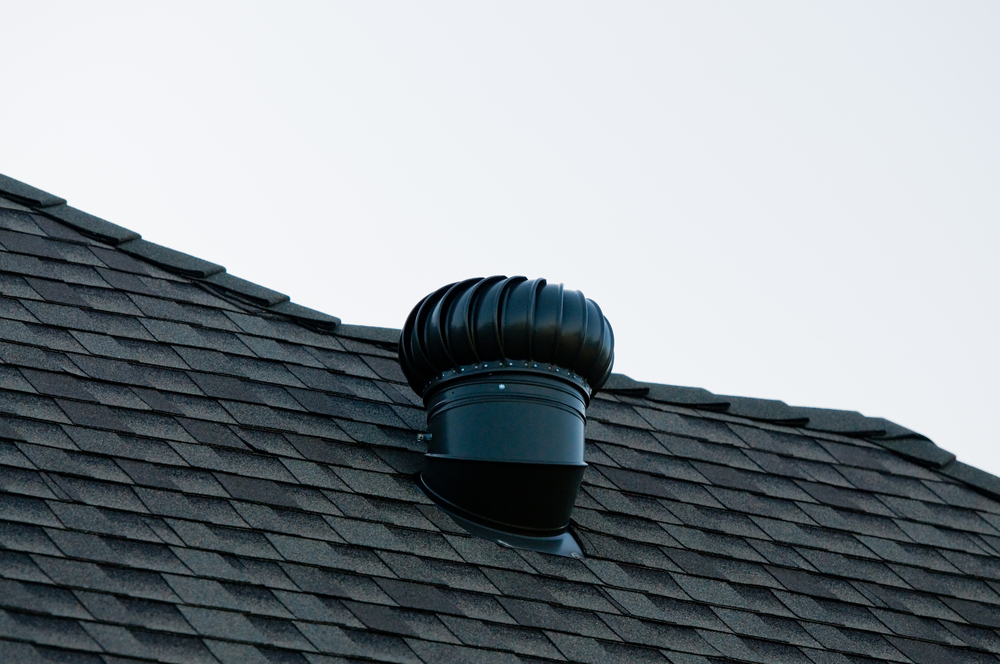Call Us
1-866-968-0479Key Takeaways:
As a homeowner, you know the significance of property maintenance. Not only should your property look good, but it should also be better in terms of functionality and comfort. You should consider upgrading property fixtures to keep it looking its best.
Suppose you’re in the process of upgrading your home. In that case, you’re probably wondering what changes you can make to improve its efficiency and functionality. A significant but often overlooked area is roof vents. They ensure proper airflow inside attics and help reduce moisture inside them.
Roof vents are available in various shapes and sizes, so choosing the right one for your property can be challenging. Absolute Roofing and Construction, Inc will focus on the type of roof vents you should consider for your home. We’ll also provide awareness of the dangers of avoiding roof vent replacement. So, please continue reading to learn about innovative venting systems and how they benefit your home.
Ventilation is exchanging or replacing air in a space with fresh outside air. Homes are sealed and insulated to conserve energy. It means interior air can’t escape, and outdoor air can’t enter. Therefore, proper ventilation helps reduce moisture levels inside the house and attic. It reduces the risk of mold growth and keeps your indoor environment healthy.
The process requires a two-way air exchange, an intake, and an exhaust. Utilizing the heat expansion principle, warm air inside rises and accumulates at the house’s highest point. Exhaust systems are consequently positioned here to facilitate natural ventilation of stale air out of the home. At the same time, intake systems are placed at the bottom and sides of the house to bring in the fresh air.
Regarding the comprehensive ventilation process, roof venting systems are generally divided into two categories: air intake and exhaust.
These vent systems are responsible for bringing fresh air to the house. The intake vents are typically placed at the bottom and sides of the roof, allowing air to come in through low-level points. Soffit vents are the most common type of air intake system.
The exhaust vents are responsible for pushing the stale air out of the house, and they’re usually placed at higher points on the roof. Commonly used exhaust ventilation systems include ridge, turbines, and eyebrow vents.
Soffit vents are the most common type of air intake system. They’re installed under the roof’s eaves and allow fresh air to enter from below. It helps improve overall ventilation by circulating warm and cool air inside, resulting in a more comfortable living environment.
Ridge vents are an effective way to remove hot air from your attic. Installing a ridge vent at the roof’s peak can expel hot air from within your attic, improving airflow throughout the house. These vents run along the ridge of your roof and typically come with a covering or cap to prevent moisture from entering.
Turbine vents are wind-powered fans rotating to draw hot air out of your attic. The rotation helps create suction, which pulls heat up and out through these vents, improving overall ventilation in your home. However, this type of venting can be vulnerable to extreme weather conditions, so they may not be ideal in hurricane-prone regions.
These roof venting systems sit just above the gable of your home, allowing hot air to escape into the area. Eyebrow vents are attractive and can be a great addition to any roofline if you want an aesthetically pleasing venting system. Usually, eyebrow vents are placed in pairs for efficient air movement.

Like the roof, their vent system functionality depends on regular maintenance. Avoiding maintenance can reduce efficiency and cause several problems. Professional contractors recommend homeowners keep up with roof venting system maintenance to keep them working optimally. Here are some of the potential issues you may run into if your roof isn’t correctly ventilated:
Improper airflow can put a strain on your air conditioning system. It leads to higher energy costs as your HVAC works harder to keep the home comfortable.
When moist air from inside the house gets trapped in an attic due to improper ventilation, it can cause mold and mildew growth issues. Not only is this a health hazard for occupants of the home, but it’s also dangerous for your roof structure.
With inadequate attic venting, warm air accumulating in the winter can heat snow on the roof. As it melts, it will create large pools of water and ice dams that weaken shingles and damage flashing around skylights and chimneys. Furthermore, ice dams seriously harm one’s safety as they can lead to fatal injuries. Reports of such incidents have been documented in the past.
Related: Attic Ventilation Fans: Do You Need Them?
Upgrading your roof venting system is essential to ensure the safety and longevity of your home. An effective roof venting system helps with energy efficiency while reducing costly repairs and damage caused by ice dams. There are four main types of ventilation systems: ridge vents, soffit vents, turbine vents, and power vents. Each one has its benefits and drawbacks. Consult a professional contractor when selecting the best option for your next upgrade in 2023.
Upgrade Your Roof Vents By Hiring The Pros in Mayfield Heights, OH
Absolute Roofing and Construction Inc are professional contractors regarding roof vent installation. We provide quality home solutions, including roof repair, ventilation, and insulation services in Mayfield Heights, OH. Our experienced roofers and contractors have the expertise to ensure your roof performs at its highest efficiency level.
Get in touch and receive a free estimate for your ventilation system upgrade in 2023.